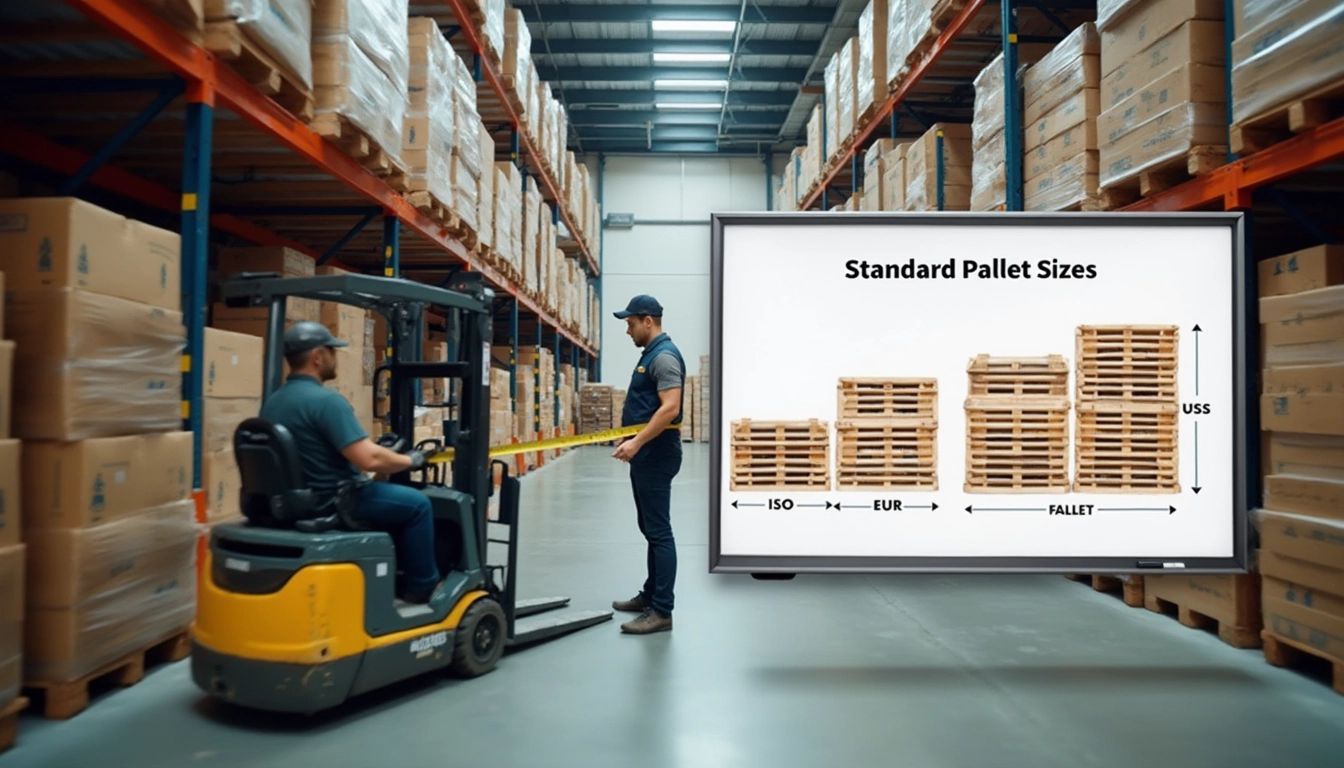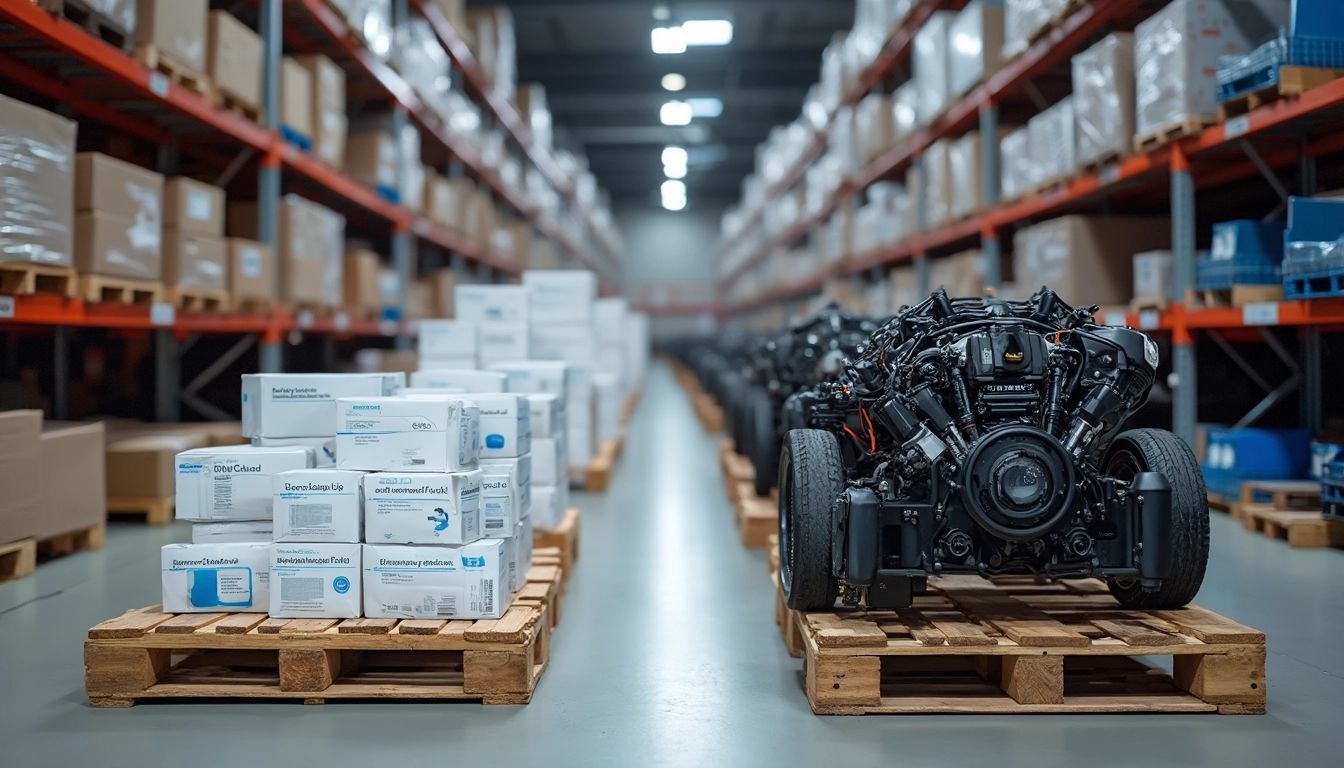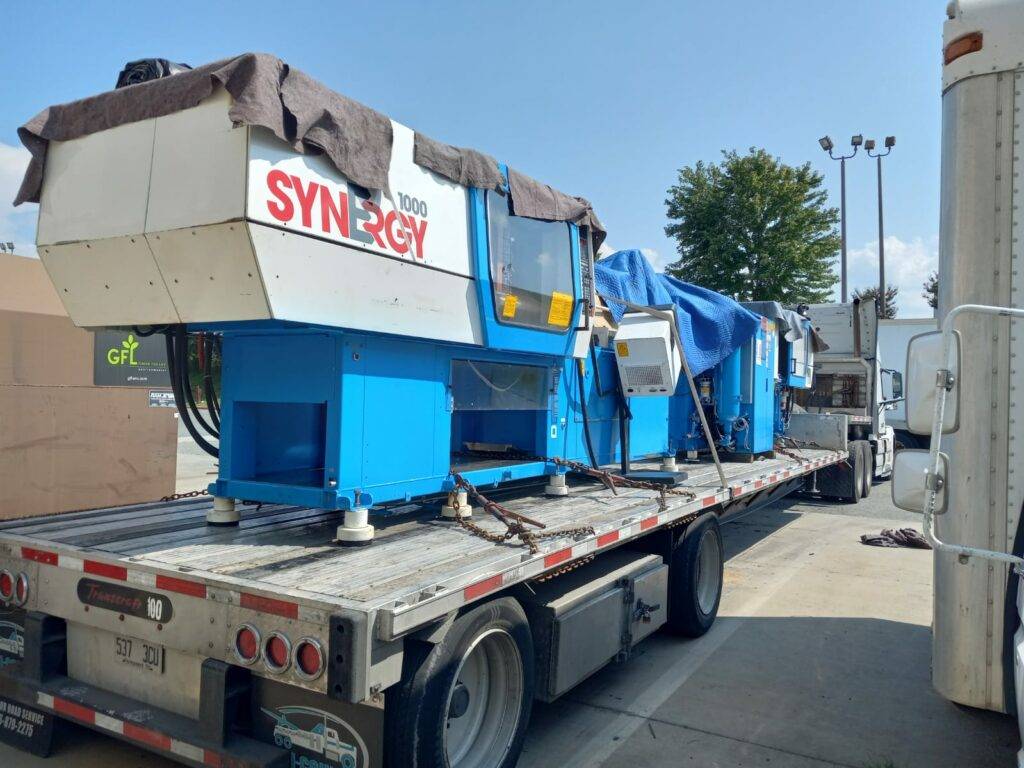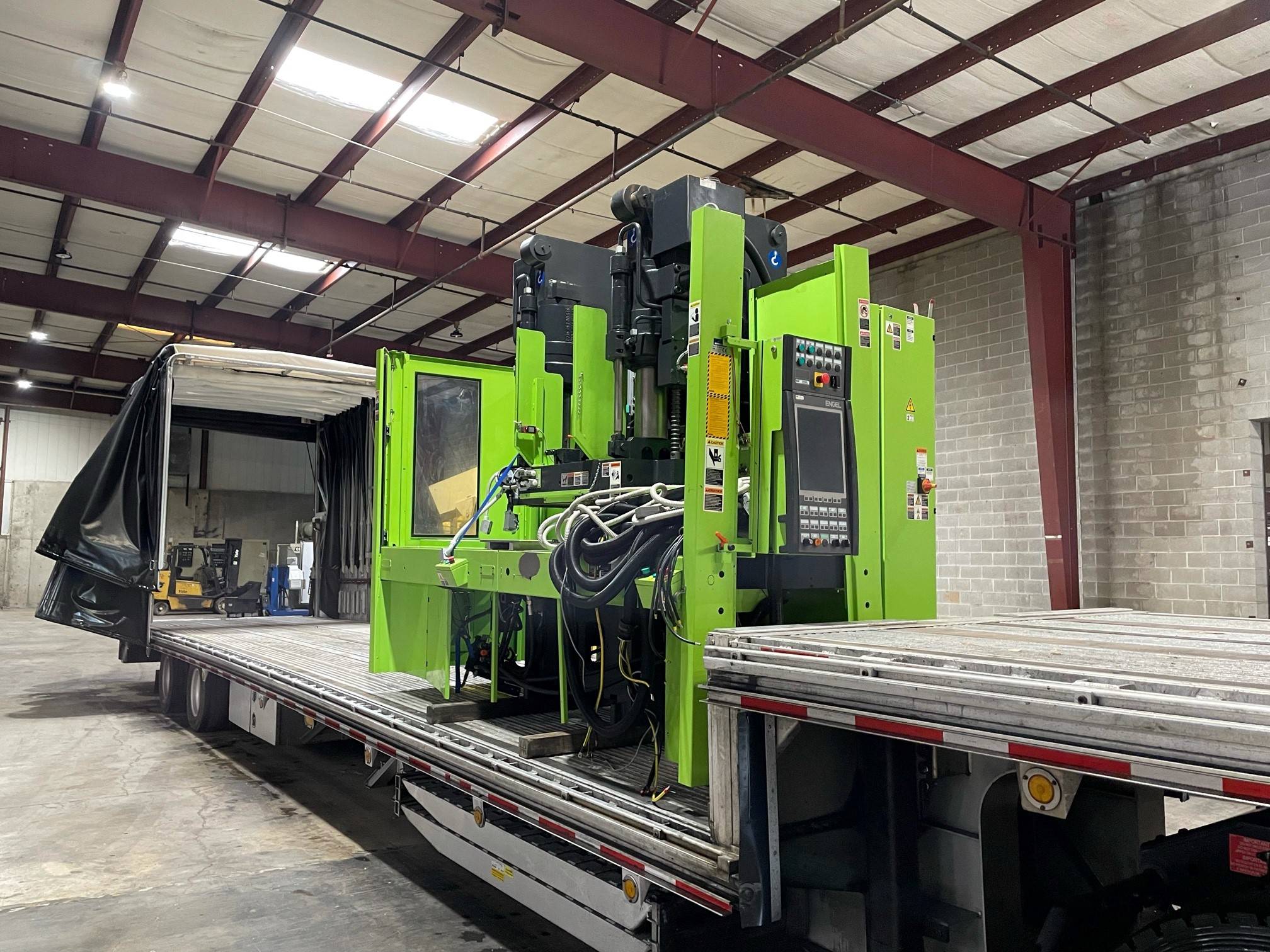Understanding the Standard Size of a Pallet: A Guide to Optimize Your Supply Chain
In the fast-paced world of logistics, every inch of space counts. Did you know that selecting the right standard pallet size can significantly optimize your supply chain and reduce costs? Understanding the size of a pallet standard isn’t just a minor detail—it’s a strategic move that can enhance efficiency across your entire operation.
Standard Pallet Sizes
When we talk about pallets, the first thing that comes to mind is the ubiquitous wooden platform that carries goods around the globe. But not all pallets are created equal. The size of a pallet standard varies depending on the region and industry, but some sizes have become prevalent due to their versatility and efficiency.

North American Standards
In North America, the most common standard pallet size is 48 x 40 inches. This pallet, standardized by the Grocery Manufacturers Association (GMA), is used extensively across various industries, including grocery, retail, and consumer goods. It accounts for approximately 30% of all wooden pallets in circulation in the United States.
Other standard sizes in North America include:
- 42 x 42 inches: Often used in the telecommunications industry, suitable for transporting large reels of wire.
- 48 x 48 inches: Common in the chemical and beverage industries, ideal for accommodating drums and large containers.
- 40 x 48 inches: Typically used in the dairy industry.
International Standards
Globally, pallet sizes can differ significantly. The International Organization for Standardization (ISO) recognizes six standard pallet dimensions to facilitate international trade:
- 800 x 1200 mm (31.5 x 47.24 inches): Euro pallet, common in Europe.
- 1000 x 1200 mm (39.37 x 47.24 inches): Widely used in Europe and Asia.
- 1067 x 1067 mm (42 x 42 inches): Used in North America, Europe, and Asia, especially for sea containers.
- 1100 x 1100 mm (43.3 x 43.3 inches): Common in Asia.
- 1140 x 1140 mm (44.9 x 44.9 inches): Used in Australia.
- 1219 x 1016 mm (48 x 40 inches): The standard North American pallet.
Understanding these standard sizes is essential when engaging in international trade to ensure compatibility with global shipping and storage systems.
Benefits of Standardization
Why does standardization matter? Adopting standard pallet sizes across your operations brings multiple benefits that can streamline your logistics processes.
Efficiency in Handling
Standard-sized pallets are compatible with most handling equipment, such as forklifts and pallet jacks. This uniformity reduces handling time and minimizes the risk of accidents or damage to goods.
Optimal Space Utilization
Using standard pallets allows for better planning of warehouse storage and trailer loading. When you know the exact dimensions, you can maximize the use of space in warehouses, trucks, and shipping containers, reducing transportation and storage costs.
Simplified Supply Chain Management
Standardization simplifies logistics planning. It ensures that your pallets will fit into standard racking systems and can be easily transferred between different modes of transportation without repalletizing.
Cost Savings
By optimizing space and improving handling efficiency, standard pallets can lead to significant cost reductions in shipping and warehousing. Additionally, standard pallets are usually more readily available and cost-effective compared to custom sizes.
Industry-Specific Variations
While standard pallet sizes offer many benefits, some industries require specific pallet dimensions to meet unique needs.

Automotive Industry
The automotive industry often uses 48 x 45-inch pallets. These pallets are designed to accommodate automotive components efficiently, reducing space wastage and ensuring the safe transport of parts.
Chemical and Beverage Industries
The 48 x 48-inch pallet is common in these industries. The square shape is ideal for transporting large drums and barrels, ensuring stability during transit.
Pharmaceutical Industry
In this sector, hygiene and contamination are critical concerns. Pallets made from plastic or metal, often with specific dimensions, are used to meet stringent cleanliness standards.
Printing and Paper Industries
The 44 x 44-inch pallet is sometimes used to transport large rolls of paper or printing materials, ensuring that these bulky items are securely stored and transported.
Understanding these industry-specific variations helps in selecting the right pallet size that not only fits your products but also meets industry standards and regulatory requirements.
Selecting the Right Pallet Size
Choosing the correct pallet size is a strategic decision that impacts your entire supply chain.
Product Dimensions and Weight
Assess the size and weight of your products. Pallet overhang can lead to product damage and reduced pallet stability. Ensure that your products fit within the pallet dimensions without overhang.
Transportation Considerations
Consider the modes of transportation used. For instance, if you’re shipping goods internationally, you might need to use pallets compatible with ISO standards to ensure they fit into sea containers and comply with international regulations.
Storage Requirements
Your warehouse layout and racking systems play a significant role. Ensure your selected pallet size fits within your storage systems and allows for efficient stacking and retrieval.
Material and Durability
- Wood Pallets: Cost-effective and widely used but can be prone to damage and contamination.
- Plastic Pallets: Durable, hygienic, and suitable for industries like pharmaceuticals and food. They are also lighter, which can reduce shipping costs.
- Metal Pallets: Extremely durable and ideal for heavy loads but are more expensive and heavier.
Stackability and Nestability
Some pallets are designed to be stackable or nestable, saving space when not in use. If storage space is a concern, consider pallets with these features.
Future Trends in Pallet Standardization
The pallet industry is not static. Emerging trends are shaping how businesses approach palletization and standardization.

Technological Innovations
The integration of technology into pallets is on the rise. Smart pallets equipped with RFID tags, GPS tracking, and IoT sensors allow for real-time tracking and data collection. This technology enhances supply chain visibility and provides valuable insights into logistics operations.
Sustainability and Eco-Friendly Materials
Environmental concerns are driving the development of pallets made from sustainable materials. Companies are increasingly adopting pallets made from recycled plastics, composite materials, or sustainably sourced wood to reduce their carbon footprint.
Global Standardization Efforts
As international trade grows, there is a push towards greater global standardization of pallet sizes. This movement aims to reduce the need for repalletizing goods when they cross borders, thus saving time and reducing costs.
Customized Solutions
Despite the benefits of standardization, some companies are investing in customized pallet solutions tailored to specific products or processes. Advances in manufacturing allow for more cost-effective production of custom pallets without sacrificing efficiency.
Optimize Your Supply Chain with the Right Partner
Understanding the size of a pallet standard and selecting the right pallet for your operations is a critical step towards optimizing your supply chain. It can reduce costs, improve efficiency, and provide a competitive edge in the marketplace.
However, navigating the complexities of logistics requires expertise and the right partnerships. That’s where we come in.
At Abound Transport Group, we are dedicated to providing real-time, cost-effective shipping solutions across the U.S., Canada, and Mexico. Our tech-powered logistics services are designed to handle all your shipping needs, whether you’re transporting CNC machinery, large vehicles, oversized equipment, or standard freight.
With advanced technology offering real-time tracking and updates, you have full visibility and control over your shipments. Our vetted carrier network ensures that your goods are handled with care and delivered efficiently.
Ready to take your supply chain to the next level? Let Abound Transport Group help you optimize your logistics operations with the right pallet sizes and shipping solutions.
Contact us today to discover how we can support your business.


